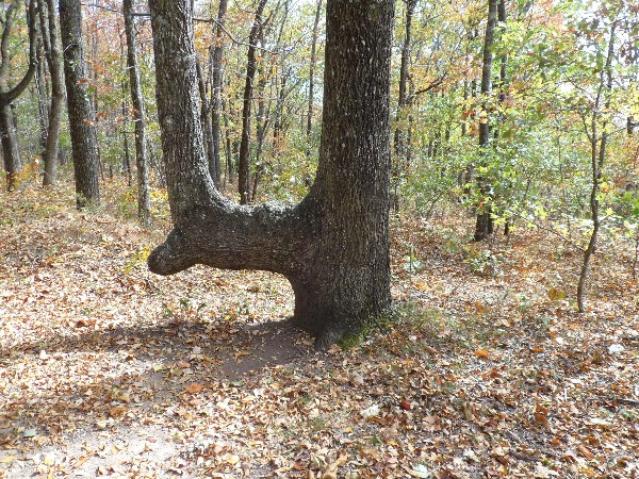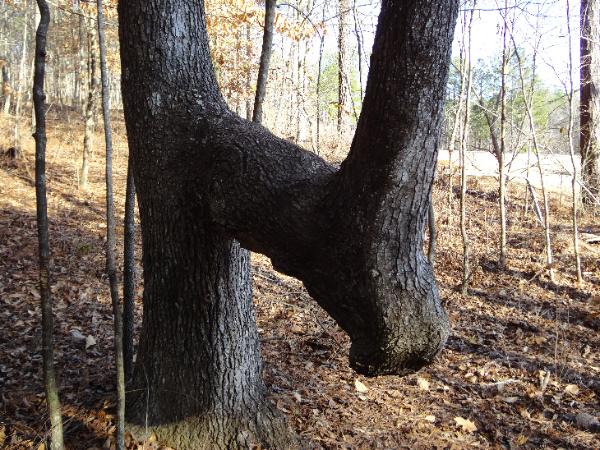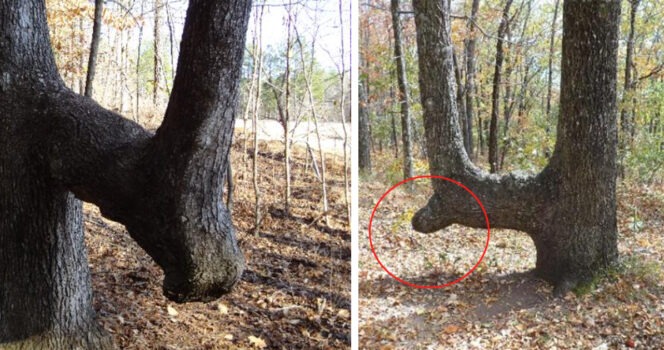Today, we rely on technology such as apps and GPS devices to help us navigate our surroundings. These modern tools make it easier than ever to find our way, whether we’re exploring new areas or simply going about our daily routines. However, centuries ago, people had to find innovative ways to mark their paths, especially when traversing thick forests where traditional maps and compasses were not available.
One of the most intriguing methods used by Native Americans to mark trails and guide their way through the wilderness involved bending trees. This technique, which might seem unusual at first, played a crucial role in ensuring safe travel in the forests. But how exactly did this work, and how can we identify these trees today? Let’s explore the fascinating history behind these “trail trees” and their enduring significance.
How Native Americans Used Trees to Mark Trails
Before the widespread use of maps or GPS technology, Native Americans relied on their deep knowledge of the land to create navigational markers. One of their methods was to bend young trees in specific ways to create permanent landmarks that could guide travelers. This technique was effective because, as the tree grew, it maintained the shape it had been trained into, thus providing a lasting signal to others.
To bend a tree, Native Americans would use a method involving placing an object, such as a piece of wood, into a hole in the tree when it was young. As the tree grew, it would grow around the object, forming a distinctive bend. Over time, these bent trees would serve as natural trail markers, indicating paths, water sources, or other significant landmarks.

Distinguishing Man-Made Trees from Natural Bends
While nature often creates trees with irregular shapes or unique growth patterns, there are key characteristics that differentiate trees bent by humans from those shaped by natural forces. Native American-bent trees tend to have a notable feature: a “nose” or notch at the end of the bend, which makes them easily identifiable. These trees are not random occurrences of nature, but carefully shaped markers designed for a specific purpose.
In addition to the visible bend, some of these trees may also bear scars from where straps or other materials were used to guide their growth during their younger years. These scars provide further evidence of human influence on the tree’s development, helping to tell the story of how these trees were once used for navigation.

A Legacy of Trail Trees Across America
The legacy of these trail trees is still present in many forests across the United States. In fact, many of these trees are over 150 years old, and some may even be more than 200 years old. Over the years, these trees have withstood the test of time, continuing to grow and flourish while maintaining their distinctive shapes. However, as modern life and development have encroached upon the land, the significance of these trees as navigational tools has largely been forgotten.
According to the American Forests website, trees with unusual bends in their trunks or branches are often not simply quirks of nature. Most of them are actually “trail trees,” carefully shaped by Native Americans to help guide travelers through rough terrain. These trees were used to point people toward water, food, or other important destinations, ensuring they could navigate through the wilderness safely.
Even though we no longer rely on these “trail trees” to find our way, their historical value remains immense. They serve as silent witnesses to the past, representing the ingenuity and resourcefulness of indigenous peoples who navigated and thrived in the forests long before modern technology existed.

Preserving the History of Trail Trees
The importance of preserving these trail trees has not gone unnoticed. A website called Mountain Stewards has been dedicated to documenting and preserving the legacy of these remarkable trees. The site has mapped out over 1,000 bent trees across the country, recording their locations and historical significance. This effort ensures that the memory of these trail markers remains intact for future generations to appreciate.
In a world where technology has made navigation easier, it’s easy to forget the rich history that these trees represent. However, they stand as a reminder of how people in the past relied on the land and their own ingenuity to find their way. By recognizing and preserving these trees, we can honor the traditions of those who came before us.

The Stories of Trail Trees
Imagine the stories these trees could tell. Each tree, with its unique bend and shape, represents a chapter in history. Some may have guided early settlers, while others could have pointed the way to important resources like water or shelter. These trees, which have stood the test of time, have seen countless journeys and witnessed the changing landscapes of the land.
Today, many of these trail trees are still visible in forests across the United States. They remain as living monuments to the past, carrying with them the wisdom of generations who relied on them to navigate the wilderness. While we may not need these trees to guide us today, they continue to serve as valuable historical markers, offering a glimpse into the past and the remarkable ways in which indigenous peoples interacted with the land.

Conclusion: Recognizing the Legacy of Trail Trees
Trail trees are not just a curiosity of the past; they are living testaments to the resourcefulness and knowledge of the indigenous peoples who once relied on them for survival. The next time you find yourself walking through the woods and encounter a tree with an unusual bend or shape, take a moment to appreciate the history behind it. These trees tell the story of a time when nature was the most reliable guide, and human ingenuity was the key to survival.
As we continue to rely on modern technology to navigate our world, it’s important to remember the wisdom of the past and the innovative ways in which people lived in harmony with nature. The preservation of these trail trees ensures that we can continue to honor and learn from the traditions of those who came before us.
Please share this article to help spread awareness about the fascinating history of trail trees and the important role they played in guiding travelers through the wilderness.
